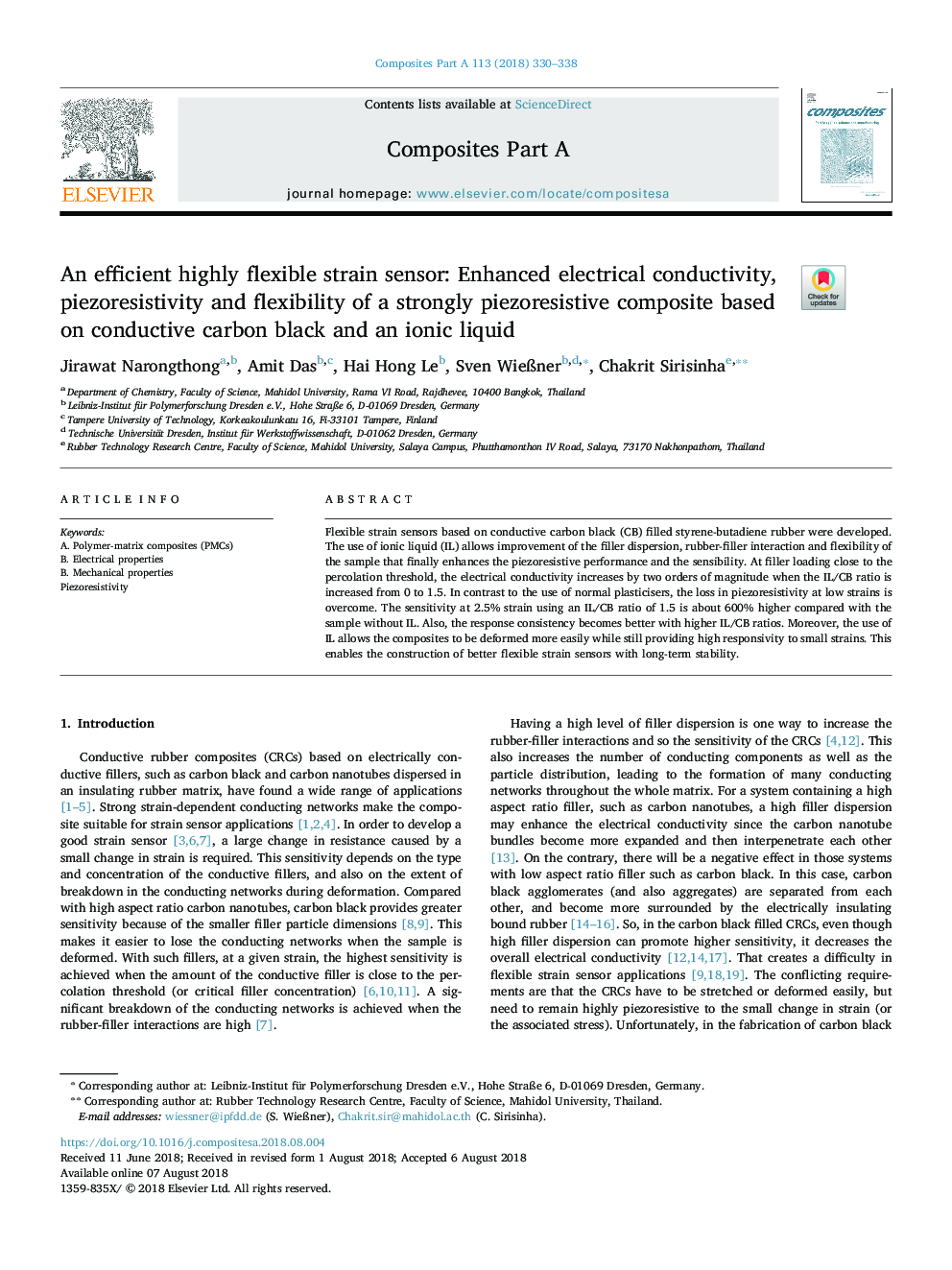| Article ID | Journal | Published Year | Pages | File Type |
|---|---|---|---|---|
| 7889346 | Composites Part A: Applied Science and Manufacturing | 2018 | 9 Pages |
Abstract
Flexible strain sensors based on conductive carbon black (CB) filled styrene-butadiene rubber were developed. The use of ionic liquid (IL) allows improvement of the filler dispersion, rubber-filler interaction and flexibility of the sample that finally enhances the piezoresistive performance and the sensibility. At filler loading close to the percolation threshold, the electrical conductivity increases by two orders of magnitude when the IL/CB ratio is increased from 0 to 1.5. In contrast to the use of normal plasticisers, the loss in piezoresistivity at low strains is overcome. The sensitivity at 2.5% strain using an IL/CB ratio of 1.5 is about 600% higher compared with the sample without IL. Also, the response consistency becomes better with higher IL/CB ratios. Moreover, the use of IL allows the composites to be deformed more easily while still providing high responsivity to small strains. This enables the construction of better flexible strain sensors with long-term stability.
Keywords
Related Topics
Physical Sciences and Engineering
Materials Science
Ceramics and Composites
Authors
Jirawat Narongthong, Amit Das, Hai Hong Le, Sven WieÃner, Chakrit Sirisinha,
